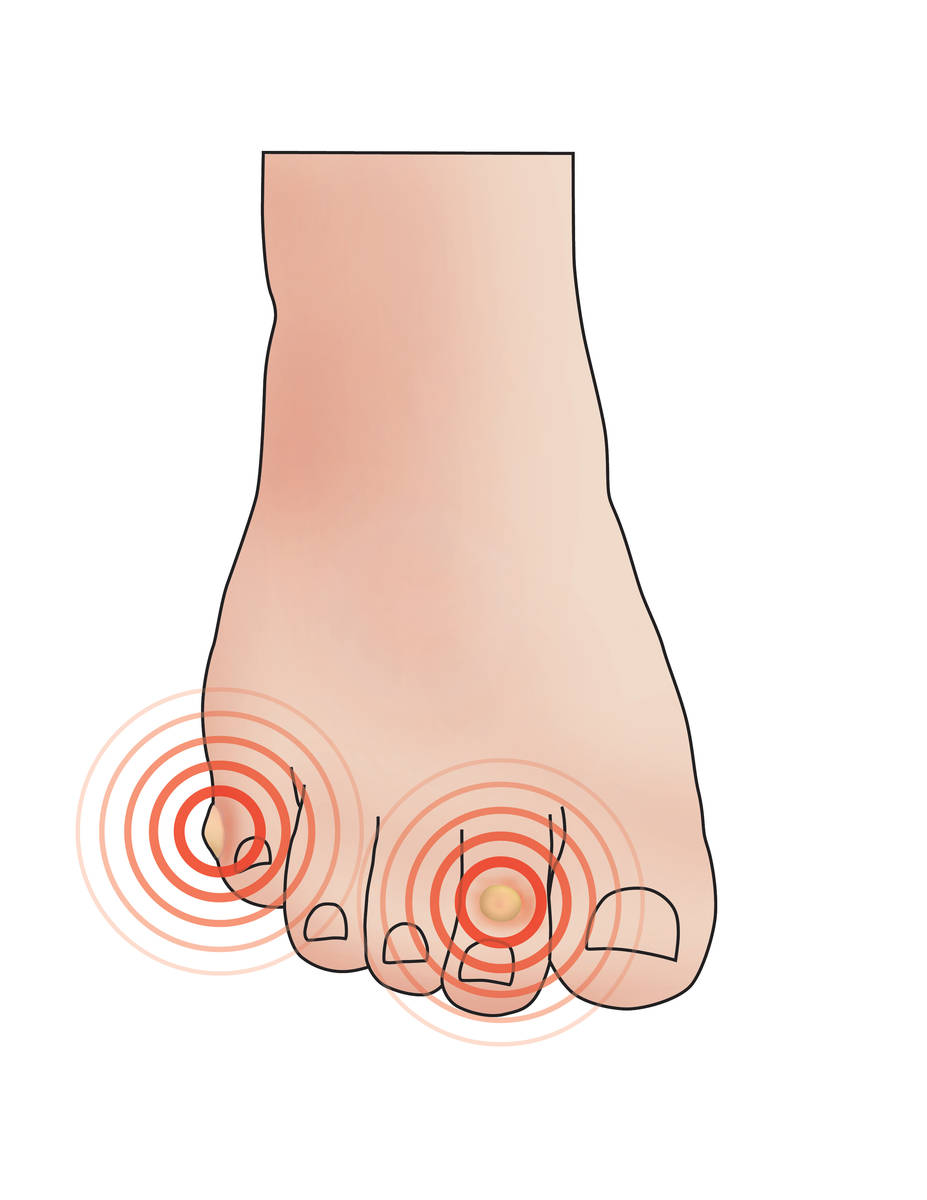Corns On Feet Treatment, Symptoms, Prevention and Causes
What are corns on feet or toes?
Corns develop from an accumulation of dead skin cells on the foot, forming thick, hardened areas.
Corns on feet are a very common ailment that usually form on the tops, sides and tips of the toes. They contain a cone-shaped core with a point that can press on a nerve below, causing pain.
Corns can become inflamed due to constant friction and pressure from footwear. Corns that form between the toes are sometimes referred to as soft corns.

Symptoms
Foot corn symptoms are usually hardened bumps which are regular in shape and can be white, gray, or yellow. They most often form on the outside of the fifth toe, since this is the point that pressure most often occurs. Corns that form between the toes are called soft corns, and they are not as firm as other corns because of moistness between the toes.
Causes
What causes corns on feet and toes?
The most common reasons for corn development are:
- Tight fitting footwear,
- High heeled footwear,
- Tight fitting stockings and socks,
- Deformed toes, or the foot sliding forward in a shoe that fits too loosely.
Soft corns on toes result from bony prominences and are located between the toes. They become soft due to perspiration in the forefoot area.
Complications that can arise from corns include bursitis and the development of an ulcer.
Prevention
How to prevent corns?
Usually they can be prevented by avoiding friction-causing activities and wearing shoes that fit properly, are activity-appropriate, and are kept in good repair. Soles and heels that wear unevenly may indicate a need for corrective footwear or special insoles. Socks and stockings should not cramp the toes. Women should also steer away from wearing high-heeled shoes.
Wear comfortable shoes. Ill-fitting footwear often cause corns and calluses. Wear shoes that do not cramp your toes.
Look at the heels on an old pair of shoes. If one side is markedly worn, you may be shifting your weight unevenly as you walk.
Ask your physician or podiatrist if a shoe insert (orthotic) could help distribute your weight more evenly. Protect your skin. Visit your pharmacy or medical supply store.
Treatment
Foot corn treatment includes first eliminating the cause of the pressure. Over-the-counter preparations are available to treat corns. These include padding (to reduce the friction on the area), ointments and medicated pads (to soften and blister the skin layers, making them easier to remove and reducing the pain). If the problem persists, consult your foot doctor.
Links to recommended PediFix® Products:
- Felt Corn Protectors
- Pedi-Quick® Safety Corn & Callus Trimmer
- Visco-GEL® Corn Protectors
- Nylon-Covered Toe Cap
- Visco-GEL® Toe Separators
- Visco-GEL® Toe Cap
- Toe Cushions
- Tubular-Foam Toe Bandages
Also, please click here to learn about our Shoe Insoles and Extra-Protective Socks, which can help prevent blisters.





